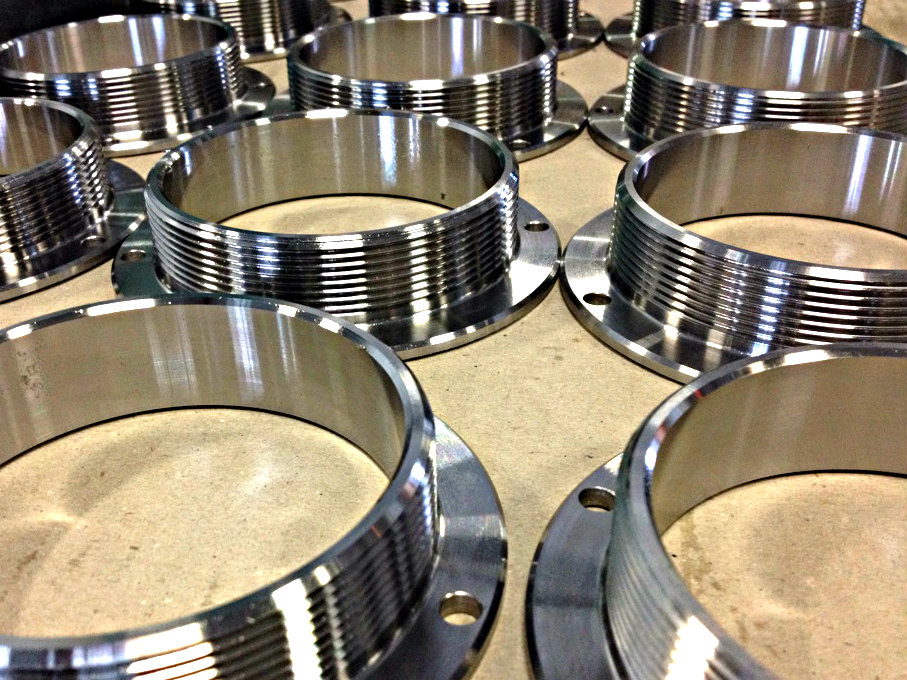Threading a workpiece is an integral aspect of the metalworking process and, thus, of just about any industry requiring any type of manufacturing.
The critical difference between thread milling and tapping is that thread milling creates a more even, smooth thread on the workpiece, while tapping can be somewhat jagged and rough.
This article will look further into the difference between thread milling and tapping to help you understand what is best for your needs.
Want a quick look into thread milling vs tapping? Check out our quick YouTube video on the topic.
Thread milling
Thread milling arrived on the scene originally due to NASA’s need for an alternative to tapping in manufacturing high-quality threads in hard materials such as titanium for space flight.
Thread milling is a somewhat complicated process that requires a machine capable of helical interpolation. What does this mean? Essentially, your CNC machine requires three axes of simultaneous movement. Two axes perform circular motions while the third moves perpendicular to these circular planes. If you have a CNC machine built in the last 10 to 15 years, then it should have this capability. In addition, thread milling provides a more even thread that is less prone to breaking, thus improving the strength of the thread vs a tapped thread.
Thread millers often use solid carbide as it is hard enough to machine titanium. They also make use of indexable-insert thread mills. Thread milling is also not as hard on your CNC machine as it doesn’t require as much force to cut as a tapping machine does. It is a great choice when looking to thread larger holes and is a versatile, high-quality threading method. However, it requires background knowledge and know-how in order to be performed effectively, including needing a computer programme to operate. At TNN Engineering, we have the capacity to provide high-quality thread milling services specified to your needs.
Thread tapping
Tapping is a fairly simple way of cutting thread into workpieces. Essentially, you use a special type of drill head called a tap that cuts the thread to the specifications you want. There are three main types of tap:
Taper tap. This tap is usually used at the beginning of the tapping process but does not cut thread to the bottom of a hole due to its tapered point.
Plug tap. This tap has less taper to its tip and is almost as valuable as a taper tap in starting the process, but it cuts thread further down into the hole.
Bottoming tap. This tap has almost no taper to its tip, thus cutting thread to the bottom of a hole. However, due to the lack of a taper, it is much harder to start the tapping process with this tap.
Now that we understand the basics of how each process works let’s look more closely at some of the advantages and disadvantages.
Thread milling vs tapping: advantages and disadvantages
Speed
Thread milling is a process that can take a long time, and while it produces a higher quality thread than tapping, tapping is a lot faster. If you are working on a project that doesn’t require extremely precise and high-quality thread, then tapping is your best choice. However, if the object being manufactured has very little margin for error, then thread milling is a better choice.
Effectiveness
In thread milling, a single tool is used to machine holes of various sizes. This reduces the cost of purchase of the tools and reduces the time lost in the replacement of the tool when machining a hole of a different size.
Thread milling can also help you process internal and external threads and substantial threaded holes such as pipe threads. This helps you eliminate the need to invest in large rigid taps to thread large holes.
From this, we can see that tapping requires a huge amount of different materials, and changing hole size means you also need to change tap size each time, which takes time and energy.
Thread Fit
CNC machine tools can be programmed to use thread milling to adjust the thread size and pitch to minute differences. The flexibility of the tools helps provide tighter tolerances and smoother surfaces than tapping and also means you can thread any size hole with just one headpiece. Tapping is fast and simple but requires you to have a variety of tap sizes on hand.
Thread Quality
The thread quality of thread milling is far superior to that of tapping and is one of the main benefits of using thread milling. In addition, due to the threads of thread milling being created by a smaller headpiece, less material is lost, and the thread size can be adjusted in smaller increments. On the other hand, tapping essentially brute forces the threads, leading to a loss of material and strength and a more jagged finished product.
CNC thread milling
At TNN engineering, we have both thread milling and tapping capabilities, and we can discuss whichever might be more suited to your needs. So if you are looking for metal manufacturing & precision engineering services in the Brisbane area, be sure to contact us today, and we can get your project up and running in no time.














